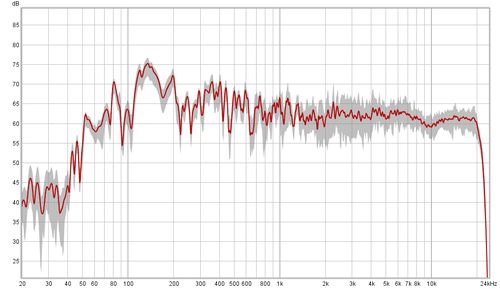
Multi-input capture is a Pro upgrade feature that allows REW to capture multiple inputs simultaneously for measurement or for the RTA. Each input can have its own calibration file. Individual SPL metering is available for the first four inputs, the level meters can show the input level for the first 32 inputs. Measurements made with multi-input capture will show an rms average of all the captured channel magnitudes with an underlay showing the span of the individual channels and can optionally include individual measurements for each channel.

The first and last channels to be captured are selected on the Soundcard preferences, Measure dialog or RTA input dialog. The example below shows selection using ASIO drivers, a similar selection is offered for Java drivers. On Windows when using the Java drivers select the WASAPI exclusive device entries for multi-channel support (entries starting EXCL: in the device selectors). On macOS or Linux Java drivers offer as many channels as the interface supports.
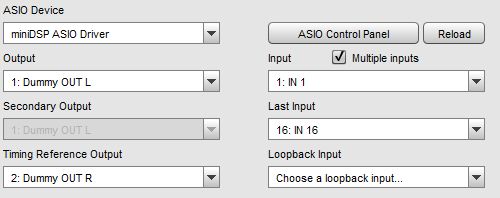
The weighting of each input in the average can be configured and inputs can be aligned to a common SPL in a chosen frequency range before being averaged, useful for spatial averaging. Weighting and SPL alignment can be configured before the measurement is made (using the Configure averaging) button on the Measure dialog) or adjusted afterwards (using the Adjust average button in the SPL & Phase graph controls). Four preset weighting configurations can be saved. The check boxes next to the weightings provide a quick way to exclude an input from the average, deselecting a box sets the weighting for that input to zero. Selecting the box again sets the weighting to 1. Custom averaging groups can be defined from any combination of the inputs.
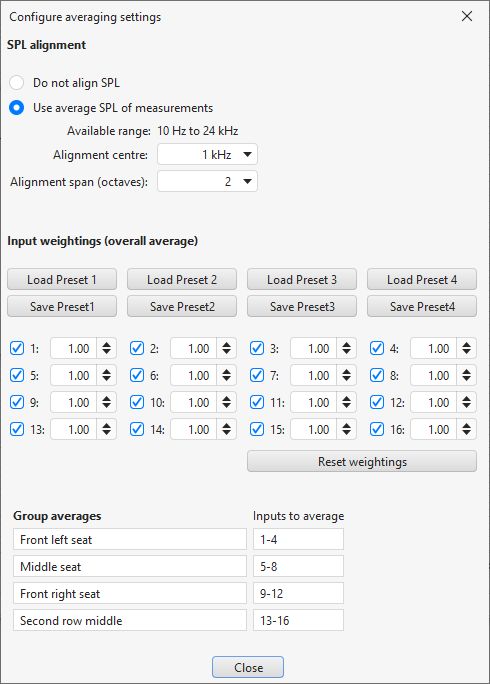
RTA measurements with multi-input capture show an rms average of the individual channel magnitudes, individual traces up to the number of inputs set on the View preferences (16 by default) and/or any averaging groups defined. If averaging groups are being used (either averaging UMIK-X modules or custom averaging groups) individual inputs that are included in an average can be hidden to prevent the graph becoming too cluttered. The processing and graphics capabilities of the computer may limit the number of inputs that can be displayed without affecting data capture.
Multi-input RTA measurements are saved in the same format as multi-input sweep measurements allowing the same weighting and SPL alignment adjustments to be made to them after measurement have been captured. If the Save inputs to individual measurements option is selected saving the current input will produce a measurement for the average and individual measurements for each input channel. Saving will also produce measurements for any individual averaging groups that have been selected using Average each UMIK-X array or Use group averages. If Do not plot inputs that are in a group or module average is selected the RTA graph will only include those individual inputs which are not in an averaging group. Weighting and SPL alignment can be configured before or during capture using the Configure average button on the RTA input selection dialog.
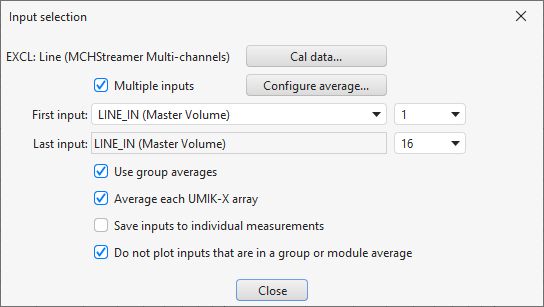
If only two inputs are selected for a multi-input RTA measurement distortion and levels will be shown individually for each and stepped sine measurements can be made for both inputs simultaneously.
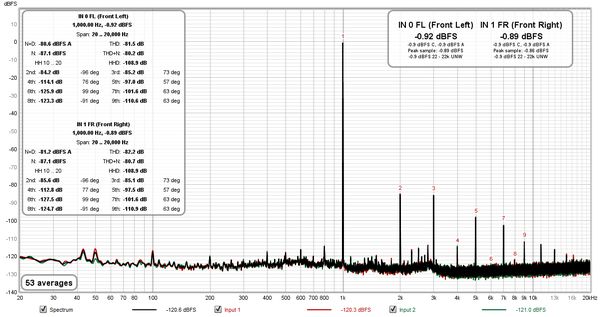
Sweep measurements with multi-input capture can generate an overall average, group averages and individual measurements for each input according to the options selected on the input selection panel. If a timing reference is used when making a sweep measurement it will preserve the relative timing for the individual measurement inputs. If a timing reference is not used the Preserve relative timing option controls whether relative timing is preserved, if selected timings will be relative to the first input.
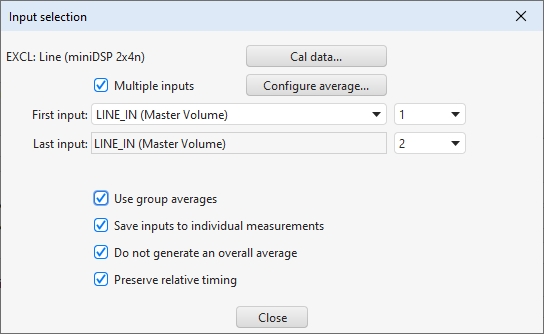
Multi-input capture would typically be used with a mic array (such as the miniDSP UMIK-X) or a multi-channel interface with multiple analog microphones connected to it. REW captures a contiguous range of input channels. Whilst it is possible to use this feature with multiple USB microphones on Windows when using an ASIO wrapper, this is NOT recommended because:
When using the miniDSP UMIK-X there are options on the Measure and RTA inputs dialog to produce an average of the four mics on each UMA4 mic array as well as an overall average of all the selected inputs. The array average measurement names will be prefixed with "A1-" for the first array, "A2-" for the second and so on.